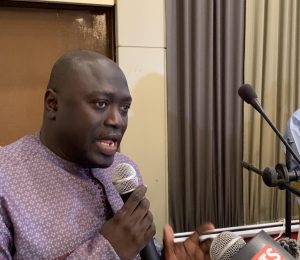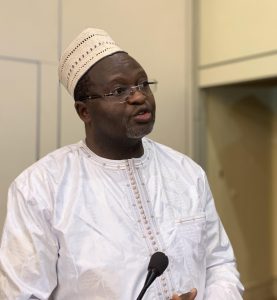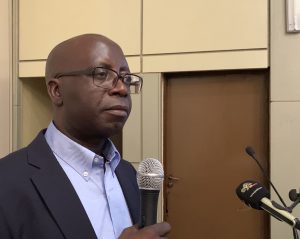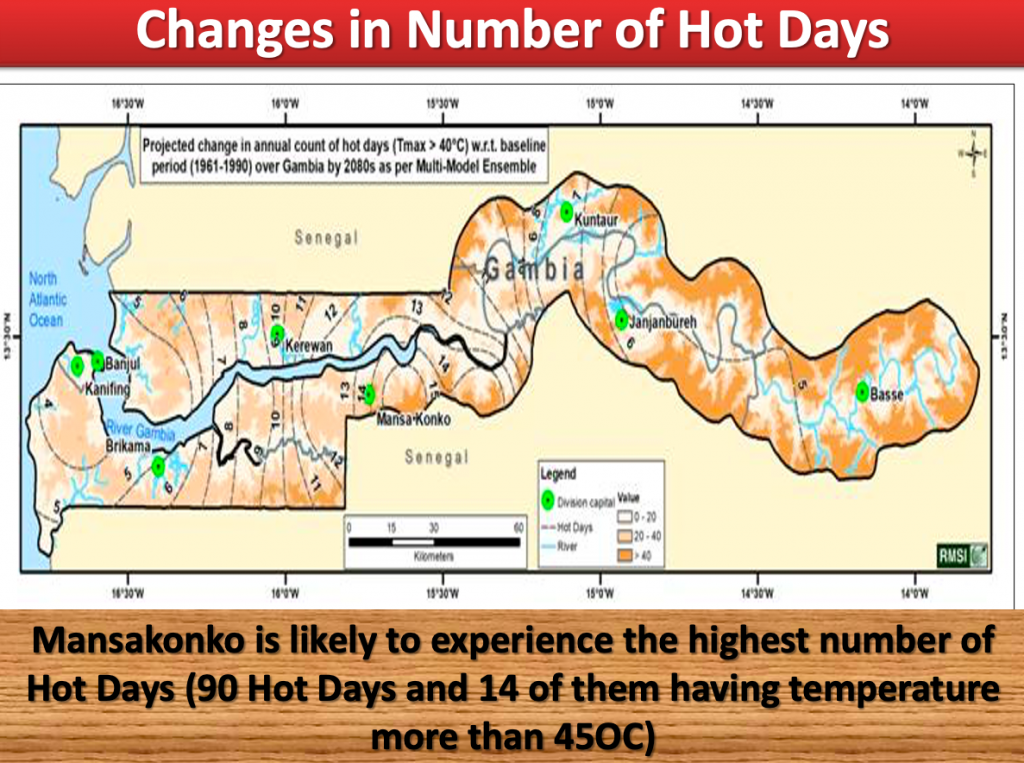Originally published by World Agroforestry
With Green Climate Fund support, delegates draft landmark text: ‘Bring trees to crop land, not crops to forest land’
One day, looking back, Gambian parents may say: ‘Look, at this green Gambia that you see, children. It was in February 2020 that as a country we decided to halt tree loss and restore cover. Never forget that. We owe it our water, health and food.’

Parents may also hark back to figures who took a strong stand at that time, like Environment, Climate Change and Natural Resources Minister Lamin B Dibba , who said, ‘farming cannot be effective without trees,’ and senior civil servant Bubu Pateh, who said, ‘If the tree is not there to pick water from the ground, rain will not be there.’
So, what event took place in early 2020 that was so momentous? In a nutshell, it was a meeting.
On 20-21 February, the Government of The Gambia, under its Large-scale Ecosystem-based Adaptation Project in the Gambia River Basin, which is funded by the Green Climate Fund with the UN Environment Programme as the accredited implementing agency, held the‘National Policy Discourse on Minimum Tree Cover on Farms in The Gambia’.
Few could have anticipated the fervor that ensued. The delegates engaged as though the futures of their families depended upon it. And indeed, they do. The West African state – tucked inside Senegal along both banks of the Gambia River – is on a precipitous slide towards becoming hotter, drier, hungrier and poorer if nature-based solutions are ignored.

Principal scientist Peter Minang from World Agroforestry, the technical partner on EbA as the project is known for short, was one of the first to speak.
‘With climate change, trees are the number one resilience method,’ said the Cameroonian geographer. ‘If you do not use trees, you have degradation. And trees can generate electricity, bring income from cashews, and produce fodder so that livestock feed better. And then there is the food side of trees. The project surveyed 1000 households. Almost 50% said that, in the hungry period, 50% of their food comes from wild trees. Based on all of these big things, with trees we can have a pathway out of poverty and become prosperous.’
Malanding Jaiteh, the manager of the EbA project, spoke next, starting with the challenges.

‘It takes a whole country to manage its trees. Forestry tried and it did not work out as expected. Village expansion affects baobabs, and you find them gone. Elephant grass is outcompeting trees in national parks. Big trees are seen as a source of income, so are cut. And rising temperatures have been a disaster for seed germination and tree physiology.’
But he also gave a rallying call. ‘Every day that we delay comes at a cost. Let us see what we can do. A lot of options have not really been taken up.’
The project which began in 2018, Jaiteh said, targets restoring 3000 hectares of farmland and 7000 hectares of degraded forest, woodland, savannah and mangroves; reaching 11,550 households with benefits of $300 a year from nature-based businesses; and increasing climate change adaptation for over 125 community forests and protected areas.
A panel discussion and responses from the room revealed the depth of experience and knowledge but also the complexity of the drivers of tree loss and some conflicting views.
- On transhumance: ‘Anything we plant is eaten by ranging livestock. We spend a lot of money fencing. Owners have the right to own animals but not to destroy trees.’ But also, more positively – ‘Livestock bring the forest closer. They bring seeds to our fields after eating there.’
- On species: ‘Slow growing trees are the adapted ones. They grow slowly because they are managing the constraints. Whatever we do, let’s prioritise indigenous trees.’
- On poverty: ‘There are fewer livelihoods every year. There are very few other things for people to do besides going in the forest.’
- On illegal extraction: ‘They take our hardwoods for chopsticks and to grow mushrooms.’
- On niches for trees: “They are living markers to avoid boundary conflicts.’ ‘They can generate hope in environments of despair like prisons.’ ‘Bring trees to cropland, not crops to forest land.’
- On protecting trees: ‘Trees are not things to be planted and left alone. “I’ve planted a tree” is not a goal. The goal is trees restoring ecosystems.’
Day 1 also saw also sobering observations as well.
‘‘As per the projected climate change scenarios and if no action is taken, most of The Gambia will not be suitable for Baobab in 50 years,’ said Lalisa Duguma from World Agroforestry. ‘Since 2009, a total of 95,000 hectares of forest have been lost. This is disheartening,’ said Ebrima Sanneh, Regional Forestry officer for Central River Region.
‘Rainfall is decreasing. In some area, water moisture is sufficient for plant growth in just three months of the year,’ said EbA chief technical advisor Bubu Pateh.

Day 2 was spent hammering out the Banjul Resolution to increase tree cover from the current 48%. The preamble begins ‘We the people’ and notes Gambians’ dependence on trees. It calls for, among other things, an agroforestry policy, the institutionalization of tree ownership and rights, and for government to prioritize high value, locally adaptable tree species.
World Agroforestry’s Duguma, who read out all 24 clauses, said: ‘This resolution will be a legacy. We in the EbA project will be able to say that it was from that day that we started something that we never expected to get that big.’
The resolution now sits with the Minister of Environment, Climate Change and Natural Resources, who closed the meeting.
‘This is just the beginning,’ said Minister Dibba. ‘This is one of the most important gatherings I’ve ever attended.’











